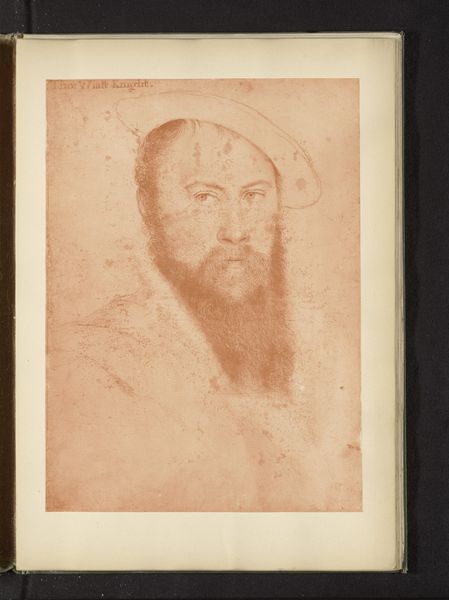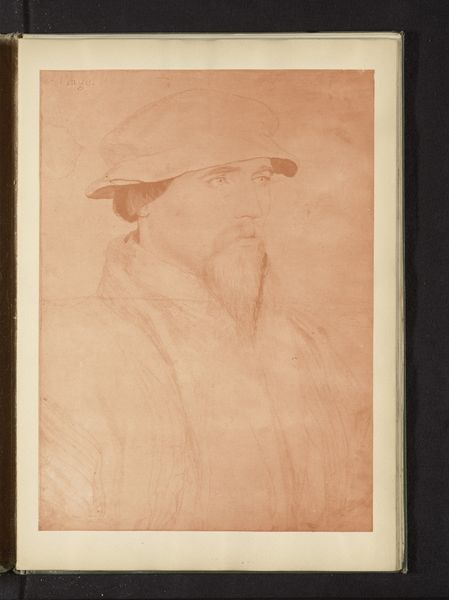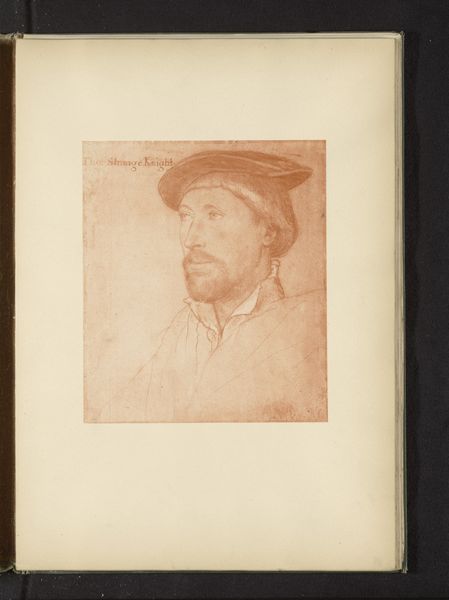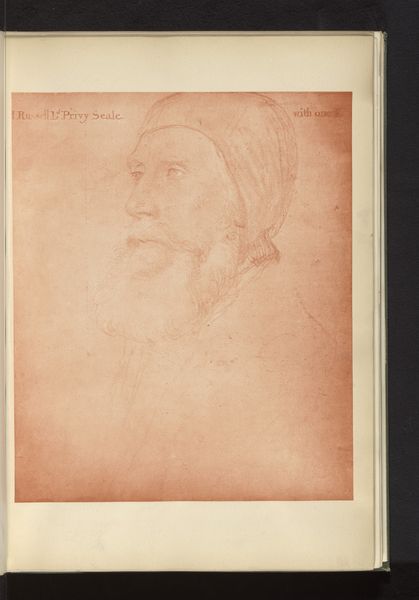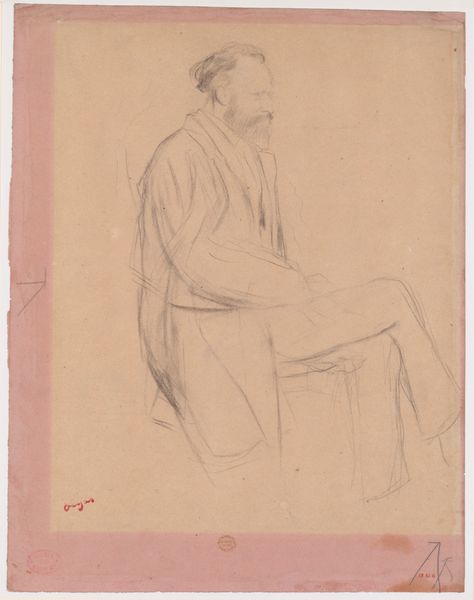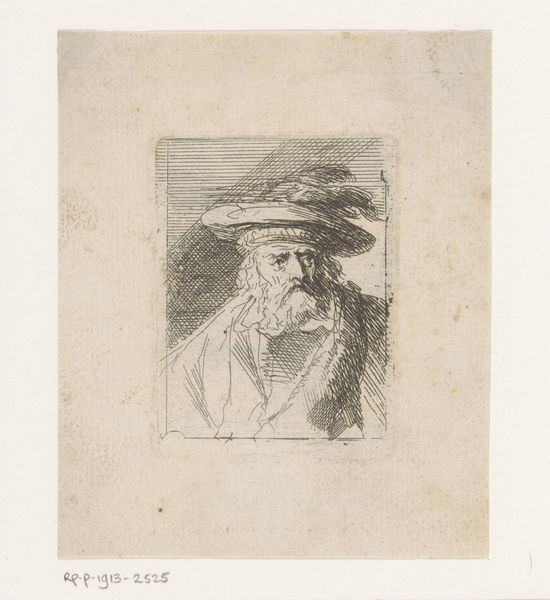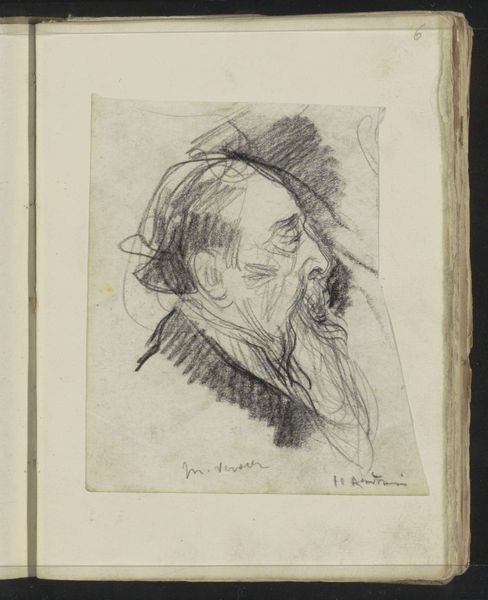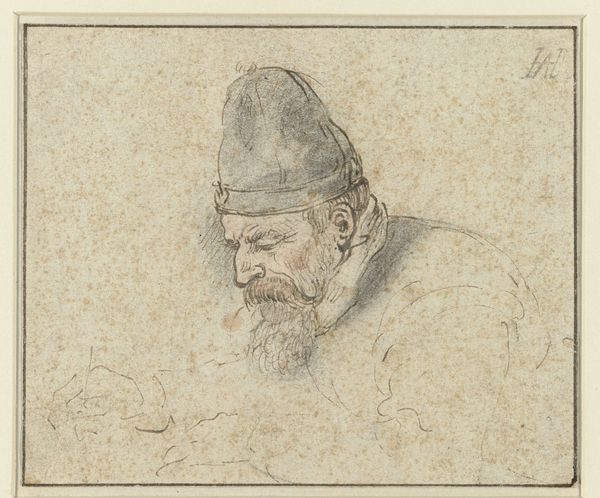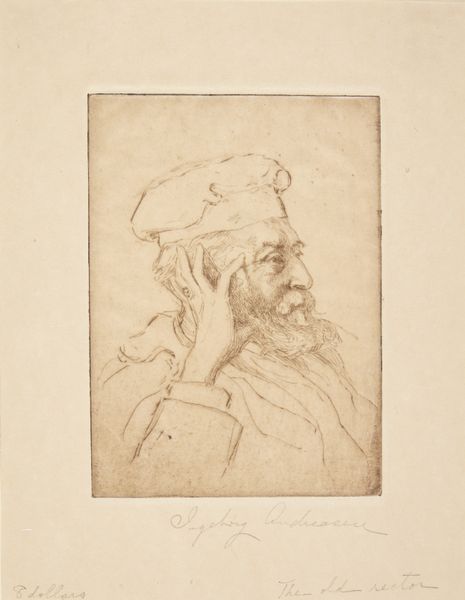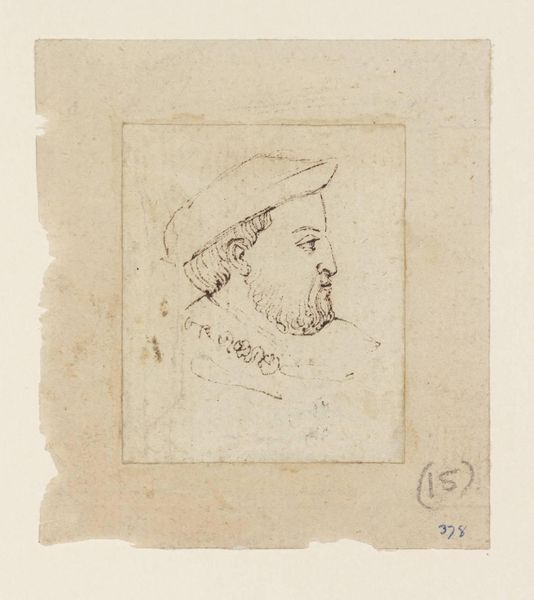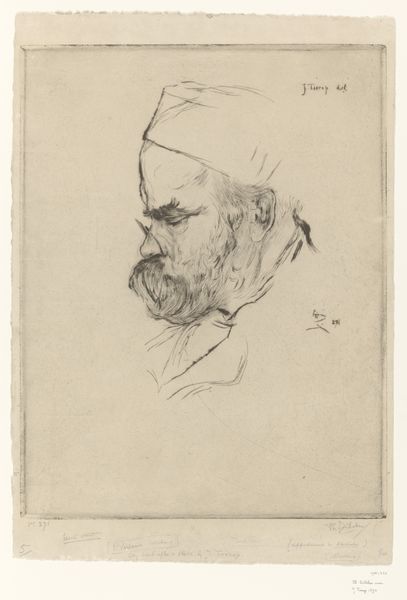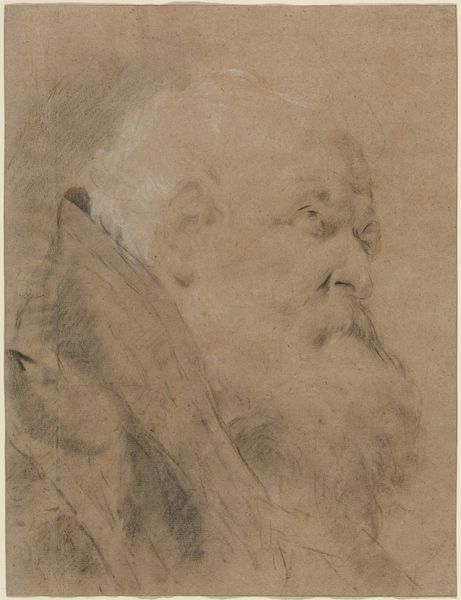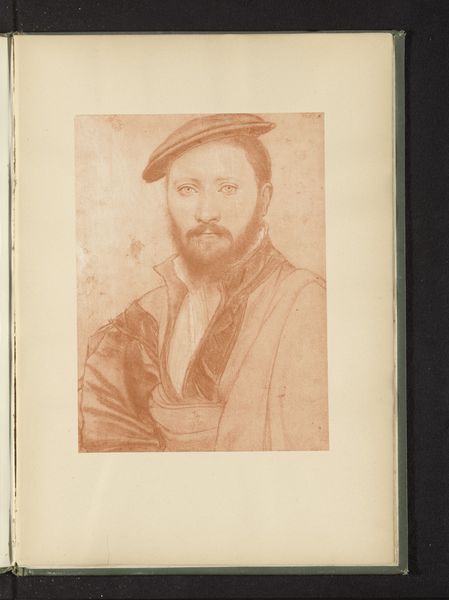
Fotoreproductie van een portret van Thomas Wentworth, 1e baron van Wentworth, door Hans Holbein before 1877
0:00
0:00
drawing
#
portrait
#
drawing
#
11_renaissance
Dimensions: height 137 mm, width 272 mm
Copyright: Rijks Museum: Open Domain
Curator: Welcome. Before us, we have what is catalogued as a phot reproduction of Hans Holbein's portrait of Thomas Wentworth, the 1st Baron Wentworth. The reproduction itself dates before 1877 and it’s held here at the Rijksmuseum. It's rendered in delicate lines. Editor: My first impression is that this image radiates a quiet nobility, even in reproduction. There's an intriguing melancholic cast to his gaze, which invites a deeper questioning of identity and status. Curator: Indeed. Notice the economical use of line, establishing form and volume with sparse yet confident strokes. The modeling is achieved through hatching, observing how the light plays across his features, and his impressive feathered hat. The technique directs us to the sitter’s inherent worth and, in its reliance on the Renaissance ideals of humanism, highlights Wentworth as an individual of notable bearing and significance. Editor: But beyond pure formalism, this work invites a closer interrogation. Wentworth was part of the aristocracy at a crucial moment. Power was shifting with the Reformation and class disparities were becoming increasingly stark. One has to wonder, who did this portrait serve? Who was meant to be reminded of Wentworth's rank and influence? Was this used in the maintenance of structural privilege? Curator: Your points bring forward essential socio-historical concerns, absolutely. Looking at the reproduction as it is here though, divorced from its original context and presented within museum walls, it stands as a testament to the enduring quality of Holbein's artistic method—the balance between form and the idealization of his sitter is captivating. Editor: Captivating, yes, but let's remember that these visual signifiers of power—the noble gaze, the fine attire—also played an active part in legitimizing inequity, something we are still grappling with today. Curator: It’s interesting how engaging with even this red-chalk reproduction of an earlier Holbein portrait opens pathways to reconsidering art historical, technical achievement as well as the weight of the social contexts it occupied. Editor: Agreed. To look closely at art, both for and beyond its intrinsic aesthetic value, ensures that history continues to be a relevant tool in assessing our current conditions.
Comments
No comments
Be the first to comment and join the conversation on the ultimate creative platform.
